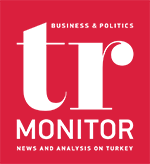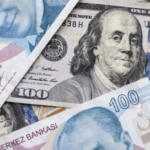The current account balance gave a surplus in September as well after June. The current account balance posted a surplus of nearly 1.9 billion dollars in September. According to Central Bank data, this surplus in September is the highest surplus since the fall of 2021, when interest rate cuts began and the foreign exchange rate climbed. In fact, the only month with a surplus in the last two years was June this year with USD 716 million, and September was the second month in this sense.
The annualized current account deficit narrowed to USD 51.7 billion with the surplus in September and, more importantly, the USD 3 billion deficit in September last year. The annual deficit was USD 56.6 billion at the end of August. Looking at the financing item of the balance of payments, there was a partial improvement in September. Portfolio investments amounted to USD 1 billion and net inflow in borrowing items was USD 4.9 billion.
Foreign direct investments decline as well. There is an outflow of USD 337 million in this item, let alone an inflow. Moreover, an outflow of USD 337 million was recorded even though USD 232 million of real estate foreign exchange came in.
A course dependent on imports…
The current account surplus of USD 1.9 billion in September is a positive development, of course, but how it was realized is even more important.
The biggest sub-item that determines the current account balance and draws its direction is undoubtedly the foreign trade balance.
Since exports do not increase or fluctuate significantly, imports are the determinant of the foreign trade balance.
When imports are high and we are in a month when there is no high income such as tourism to compensate for this, the current account deficit skyrockets.
Or, as in September, the opposite happens; imports are relatively low, we are in a month with high tourism revenues and we have a current account surplus.
At this stage, it is of course necessary to emphasize why imports have remained low. What is it that we imported less of that led to such a situation?
Let’s go back to TurkStat data this time. Imports (CIF) in September amounted to USD 27.5 billion, down by USD 2.8 billion compared to USD 30.3 billion in August. This decrease in imports led to a current account surplus in September.
The important question is which items accounted for the USD 2.8 billion decrease in imports.
According to TurkStat data, raw material imports decreased by USD 2 billion in September compared to August. Investment goods imports also decreased by USD 409 million.
Now the meaning of these reductions is clear. Contrary to popular belief, we are not a country that imports large amounts of consumption goods. If we exclude automobiles, the share of consumption goods imports in total imports is around 8 percent.
In other words, Turkey has to import raw materials and investment goods to produce. In this case, can a current account deficit improvement based on a reduction in imports of raw materials and investment goods be permanent?
Today, fewer imports of raw materials and investment goods, lower imports and a narrowing current account deficit or a surplus current account balance.
But tomorrow, it is inevitable to suffer the consequences of this import reduction; falling production, falling exports, rising prices…
As a result, unless we can create a new equilibrium that will improve in the current account balance no longer dependent on the decline in imports, this situation will neither last long nor yield good results…







